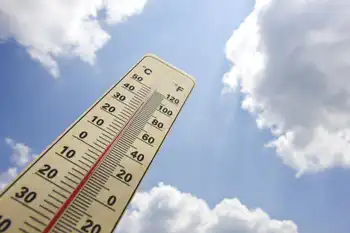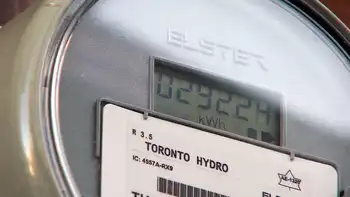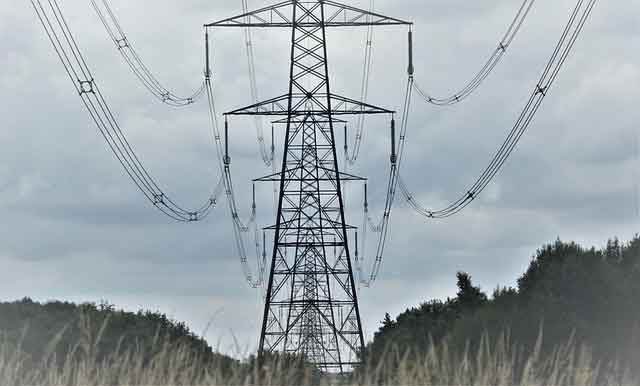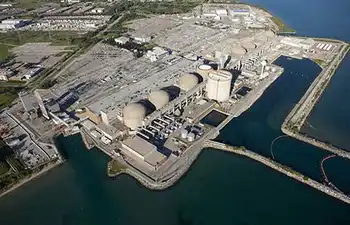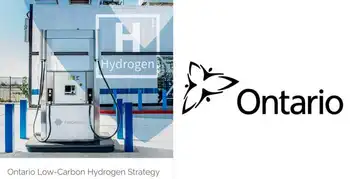EPA scales back emission rules
By New York Times
Arc Flash Training CSA Z462 - Electrical Safety Essentials
Our customized live online or in‑person group training can be delivered to your staff at your location.

- Live Online
- 6 hours Instructor-led
- Group Training Available
The new regulations represent a major step back from more demanding and costly rules proposed last spring that provoked an outcry from members of Congress from both parties and from thousands of affected businesses. One industry-financed study said the proposed standard would cost businesses $20 billion to comply and cause the loss of more than 300,000 jobs.
EPA officials said that the altered rule would cost half as much as the previous proposal while achieving virtually the same health benefits. The agency pegged compliance costs for the new version of the rule at $2.1 billion a year and said it would generate more than 2,000 new jobs.
Gina McCarthy, director of the EPAÂ’s air and radiation office, said that the pollution reductions would save from 2,600 to 6,600 lives per year by 2014 and avert 4,100 heart attacks and 42,000 asthma attacks annually.
“These health protections will save between $23 billion and $56 billion in health-related costs,” Ms. McCarthy said in a conference call for reporters. “They are realistic, they are achievable, and they are reasonable, and they come at roughly half the cost to comply compared to that in the proposed rule in May 2010.”
The EPA withdrew the earlier rule in December, saying it needed another 15 months to refashion the rule to respond to complaints and new data. A federal judge rejected the extension, saying the agency had already spent three years developing the regulation, and ordered it to produce a new rule.
The agency grudgingly met the deadline but said it would remain open to comments and proposals for changes from lawmakers, businesses and citizens.
Agency officials said the new rule was consistent with an executive order issued by President Obama in January calling for a broad review of environmental, health, safety and financial regulations to ensure that they were not imposing too heavy a cost on the economy. Changes to the boiler rule could foreshadow a less muscular approach to air pollution rules due for power plants next month and a series of regulations of greenhouse gases to be rolled out over the next several years.
The power plant rules are currently being scrubbed by the White House Office of Management and Budget.
The rule affects roughly 200,000 boilers, small power plants and incinerators operated by factories, chemical plants, municipalities, universities, churches and commercial buildings.
About 187,000 of these are relatively small sources of the target pollutants — lead, mercury, soot and toxic gases — and will have to do little more than perform routine “tune-ups” every year or two to meet the new standard. They will be allowed to achieve the cuts using readily available control technology at what the EPA said was a reasonable cost. The agency said the earlier version, which would have required boiler operators to apply “maximum achievable control technology,” set too high a bar.
“The original standards for these have been dramatically refined and updated to ensure maximum flexibility for these sources,” the agency said in a press release.
The 13,800 larger facilities, including refineries, chemical plants and large factories, will have to meet numerical targets for pollution reduction, although the agency said it had narrowed the standards to lower compliance costs. The government will provide technical assistance in meeting the new standards and grant incentives for switching to cleaner-burning fuels such as natural gas and biomass.
Bob Bessette, president of the Council of Industrial Boiler Owners, said it appeared that the EPA had provided some relief for operators of smaller units but nonetheless called it a “terrible disappointment” because it was not clear that its standards could be met at a reasonable cost.
He noted that because the new rule was so different from the previous version, EPA would immediately reopen it to comment.
“This is a good plan given our nation’s current economic challenges,” Mr. Bessette said. “It makes much more sense for EPA and all stakeholders to revisit key challenges, take additional time and get the rule right.”






